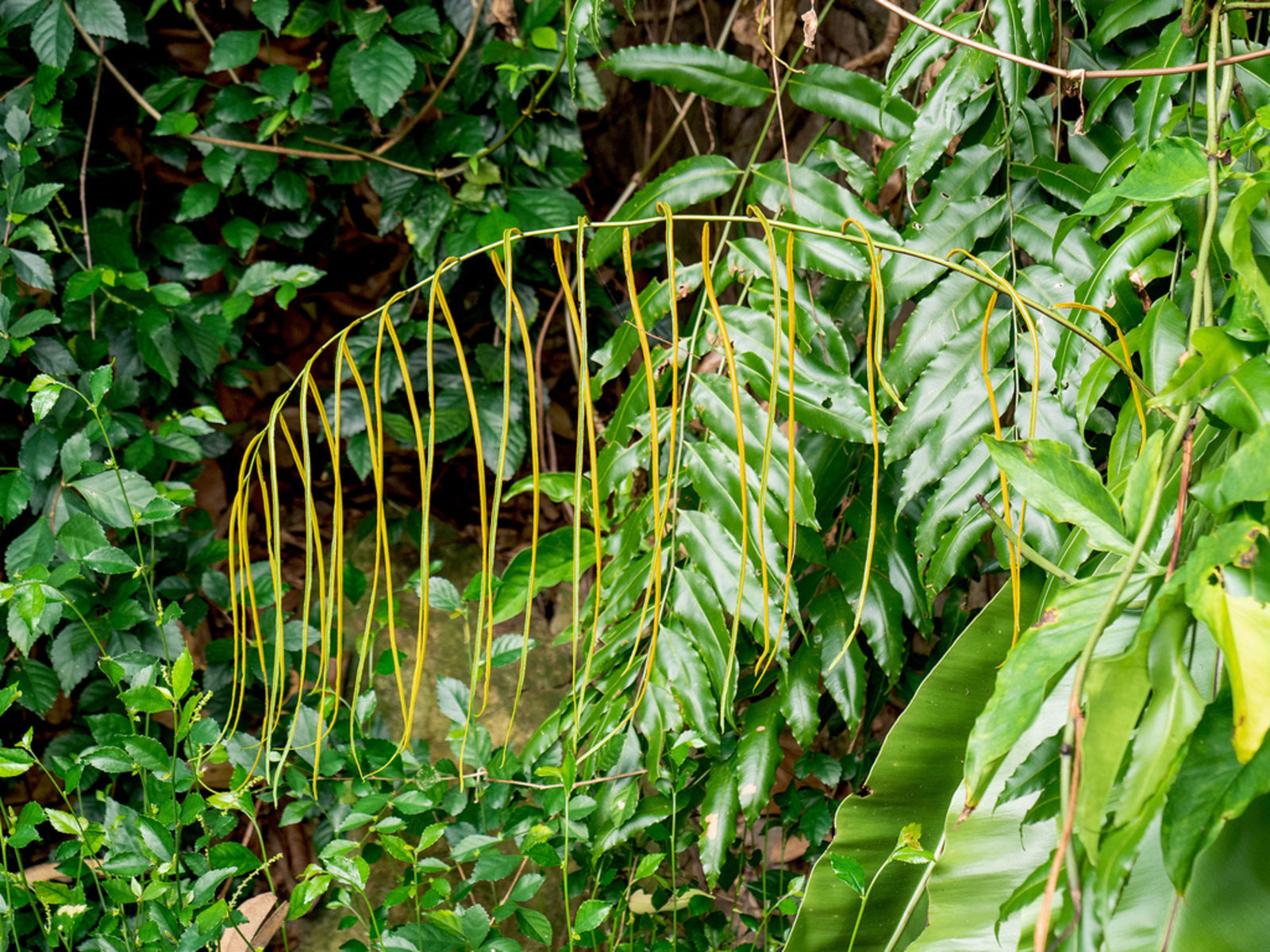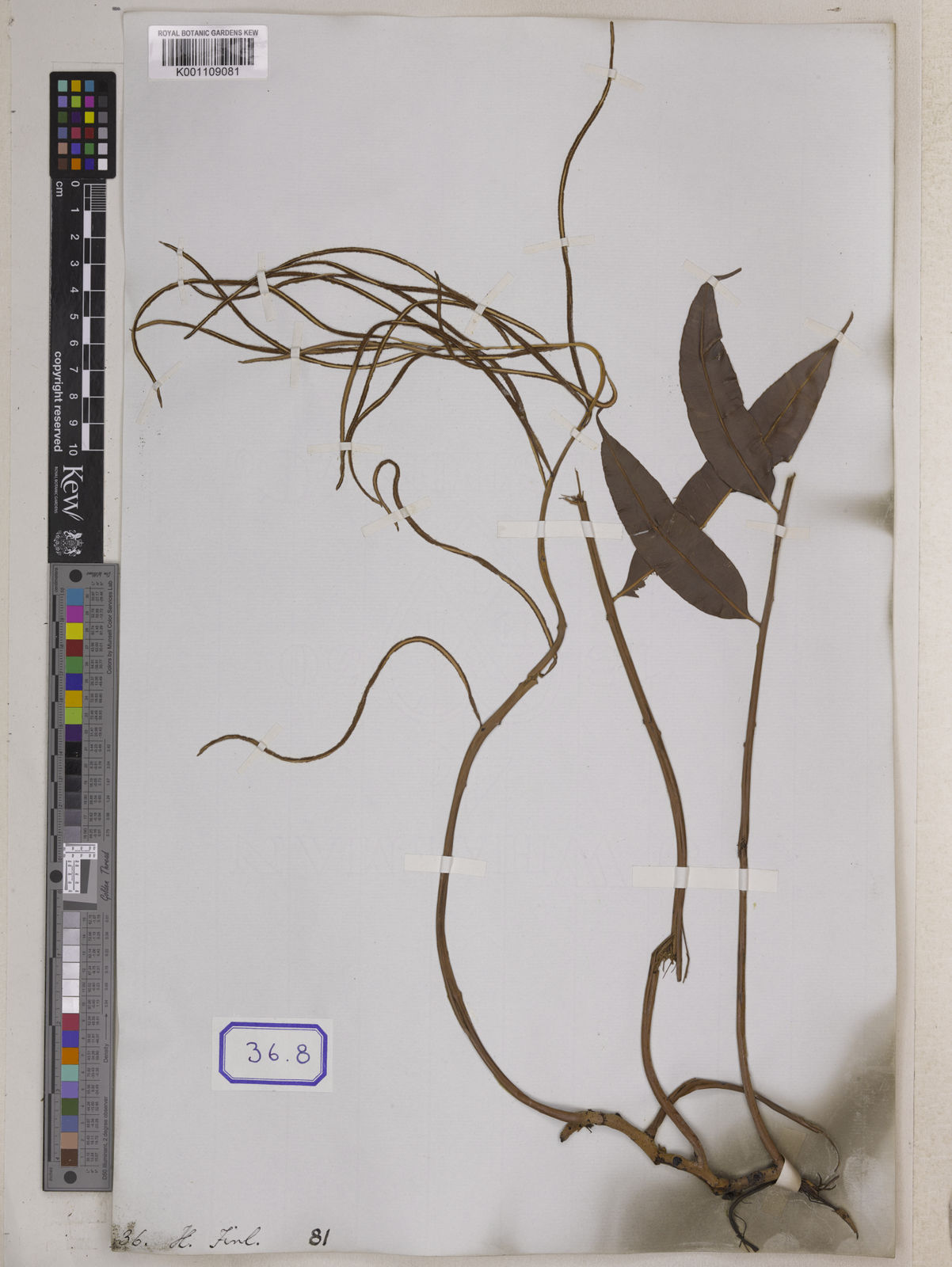Family: Aspleniaceae
Author: (Burm.f.) Bedd.
Bibliography: Ferns Brit. India, Suppl.: 26 (1876)
Year: 1876
Status: accepted
Rank: species
Genus: Stenochlaena
Vegetable: False
Observations: Trop. & Subtrop. Asia to W. Pacific
Description
Lambhibing, scientifically known as Stenochlaena palustris, is a remarkable fern that belongs to the family Aspleniaceae. This plant is indigenous to tropical and subtropical regions of Asia and extends its presence to the Western Pacific. It was first documented in botanical literature in the supplement to “Ferns of British India” in 1876, aided by the contributions of (Burm.f.) Bedd.
The Lambhibing fern thrives in warm and humid environments, often found in moist lowland areas including swampy forests and along riverbanks. Its adaptation to such habitats makes it a resilient plant, capable of proliferating in conditions that might be challenging for other fern species.
The plant’s structure is distinctive, characterized by its elongated, glossy green fronds that can grow extensively, adding to the dense foliage of the areas it inhabits. As an epiphytic or terrestrial fern, Stenochlaena palustris shows versatility in its growing patterns, whether clinging onto tree trunks or spreading across the forest floor.
Ecologically, Lambhibing plays a significant role in its native ecosystems. It contributes to the biodiversity and stability of forest ecosystems by providing habitat and food for various wildlife species. Additionally, this fern holds cultural significance in many indigenous communities who often utilize it for medicinal purposes or as a food source.
In summary, Stenochlaena palustris is a vital tropical fern with a broad geographical range across Asia and the Western Pacific. Its presence enhances both the ecological dynamics of tropical forests and the cultural traditions of local communities.
Common Names
En: Lambhibing
Zh: 光叶藤蕨
Id: Lemidi
Su: Paku hurang
Th: ลำเท็ง
To: Pasivaka
: Swamp vine fern
Synonyms
- Polypodium palustre (Burm.f.)
- Acrostichum palustre ((Burm.f.) C.B.Clarke)
- Chrysodium palustre ((Burm.f.) Luerss.)
- Lomaria haenkeana (C.Presl)
- Stenochlaena blumeana (C.Presl)
- Stenochlaena hainanensis (Ching & P.S.Chiu)
- Pteris scandens (Roxb.)
- Onoclea scandens (Sw.)
- Lomariopsis scandens (Mett.)
- Lomaria juglandifolia (C.Presl)
- Stenochlaena juglandifolia (C.Presl)
- Stenochlaena laurifolia (C.Presl)
- Stenochlaena fraxinifolia (C.Presl)
- Olfersia scandens (C.Presl)
Distribution
- Assam (native)
- Bangladesh (native)
- Bismarck Archipelago (native)
- Borneo (native)
- Cambodia (native)
- Caroline Is. (native)
- China South-Central (native)
- China Southeast (native)
- Fiji (native)
- Hainan (native)
- India (native)
- Jawa (native)
- Laos (native)
- Lesser Sunda Is. (native)
- Malaya (native)
- Maluku (native)
- Myanmar (native)
- Nepal (native)
- New Guinea (native)
- Nicobar Is. (native)
- Northern Territory (native)
- Philippines (native)
- Queensland (native)
- Samoa (native)
- Solomon Is. (native)
- Sri Lanka (native)
- Sulawesi (native)
- Sumatera (native)
- Thailand (native)
- Tonga (native)
- Vietnam (native)
- Wallis-Futuna Is. (native)
- Western Australia (native)
Additional Images
Leaf
Taken Nov 17, 2022 by Blue Bottle (cc-by-sa)
Taken May 4, 2020 by suroso suroso mle (cc-by-sa)
Taken Jul 31, 2020 by jaydeep lakkad (cc-by-sa)

© copyright of the Board of Trustees of the Royal Botanic Gardens, Kew.

© copyright of the Board of Trustees of the Royal Botanic Gardens, Kew.
Sources
- WFO (No URL)
- IPNI (No URL)
- GBIF (https://www.gbif.org/species/4079023)
- POWO (http://powo.science.kew.org/taxon/urn:lsid:ipni.org:names:17223880-1)
- PlantNet (https://identify.plantnet.org/species/the-plant-list/Stenochlaena palustris (Burm. f.) Bedd.)
Specifications
Growth habit>: Forb/herb



